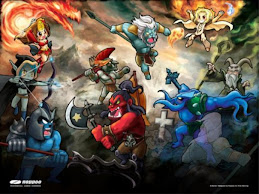
Are you depressed?
If you identify with several of the following signs and symptoms, and they just won’t go away, you may be suffering from clinical depression.
- you can’t sleep or you sleep too much
- you can’t concentrate or find that previously easy tasks are now difficult
- you feel hopeless and helpless
- you can’t control your negative thoughts, no matter how much you try
- you have lost your appetite or you can’t stop eating
- you are much more irritable, short-tempered, or aggressive than usual
- you’re consuming more alcohol than normal or engaging in other reckless behavior
- you have thoughts that life is not worth living (Seek help immediately if this is the case)
Common signs and symptoms of depression
- Feelings of helplessness and hopelessness. A bleak outlook—nothing will ever get better and there’s nothing you can do to improve your situation.
- Loss of interest in daily activities. No interest in former hobbies, pastimes, social activities, or sex. You’ve lost your ability to feel joy and pleasure.
- Appetite or weight changes. Significant weight loss or weight gain—a change of more than 5% of body weight in a month.
- Sleep changes. Either insomnia, especially waking in the early hours of the morning, or oversleeping (also known as hypersomnia).
- Anger or irritability. Feeling agitated, restless, or even violent. Your tolerance level is low, your temper short, and everything and everyone gets on your nerves.
- Loss of energy. Feeling fatigued, sluggish, and physically drained. Your whole body may feel heavy, and even small tasks are exhausting or take longer to complete.
- Self-loathing. Strong feelings of worthlessness or guilt. You harshly criticize yourself for perceived faults and mistakes.
- Reckless behavior. You engage in escapist behavior such as substance abuse, compulsive gambling, reckless driving, or dangerous sports.
- Concentration problems. Trouble focusing, making decisions, or remembering things.
- Unexplained aches and pains. An increase in physical complaints such as headaches, back pain, aching muscles, and stomach pain.
Types of depression
Depression comes in many shapes and forms. The different types of depression have unique symptoms, causes, and effects. Knowing what type of depression you have can help you manage your symptoms and get the most effective treatment.
Major depression
Major depression is characterized by the inability to enjoy life and experience pleasure. The symptoms are constant, ranging from moderate to severe. Left untreated, major depression typically lasts for about six months. Some people experience just a single depressive episode in their lifetime, but more commonly, major depression is a recurring disorder. However, there are many things you can do to support your mood and reduce the risk of recurrence.
Atypical Depression
Atypical depression is a common subtype of major depression. It features a specific symptom pattern, including a temporary mood lift in response to positive events. You may feel better after receiving good news or while out with friends. However, this boost in mood is fleeting. Other symptoms of atypical depression include weight gain, increased appetite, sleeping excessively, a heavy feeling in the arms and legs, and sensitivity to rejection. Atypical depression responds better to some therapies and medications than others, so identifying this subtype can be particularly helpful.
Dysthymia (recurrent, mild depression)
Dysthmia is a type of chronic “low-grade” depression. More days than not, you feel mildly or moderately depressed, although you may have brief periods of normal mood. The symptoms of dysthymia are not as strong as the symptoms of major depression, but they last a long time (at least two years). These chronic symptoms make it very difficult to live life to the fullest or to remember better times. Some people also experience major depressive episodes on top of dysthymia, a condition known as “double depression.” If you suffer from dysthymia, you may feel like you’ve always been depressed. Or you may think that your continuous low mood is “just the way you are.” However, dysthymia can be treated, even if your symptoms have gone unrecognized or untreated for years.
Seasonal affective disorder (SAD)
There’s a reason why so many movies and books portray rainy days and stormy weather as gloomy. Some people get depressed in the fall or winter, when overcast days are frequent and sunlight is limited. This type of depression is called seasonal affective disorder (SAD). Seasonal affective disorder is more common in northern climates and in younger people. Like depression, seasonal affective disorder is treatable. Light therapy, a treatment that involves exposure to bright artificial light, often helps relieve symptoms.
Authors: Melinda Smith, M.A., Joanna Saisan, MSW, and Jeanne Segal, Ph.D. Last updated: July 2011



No comments:
Post a Comment